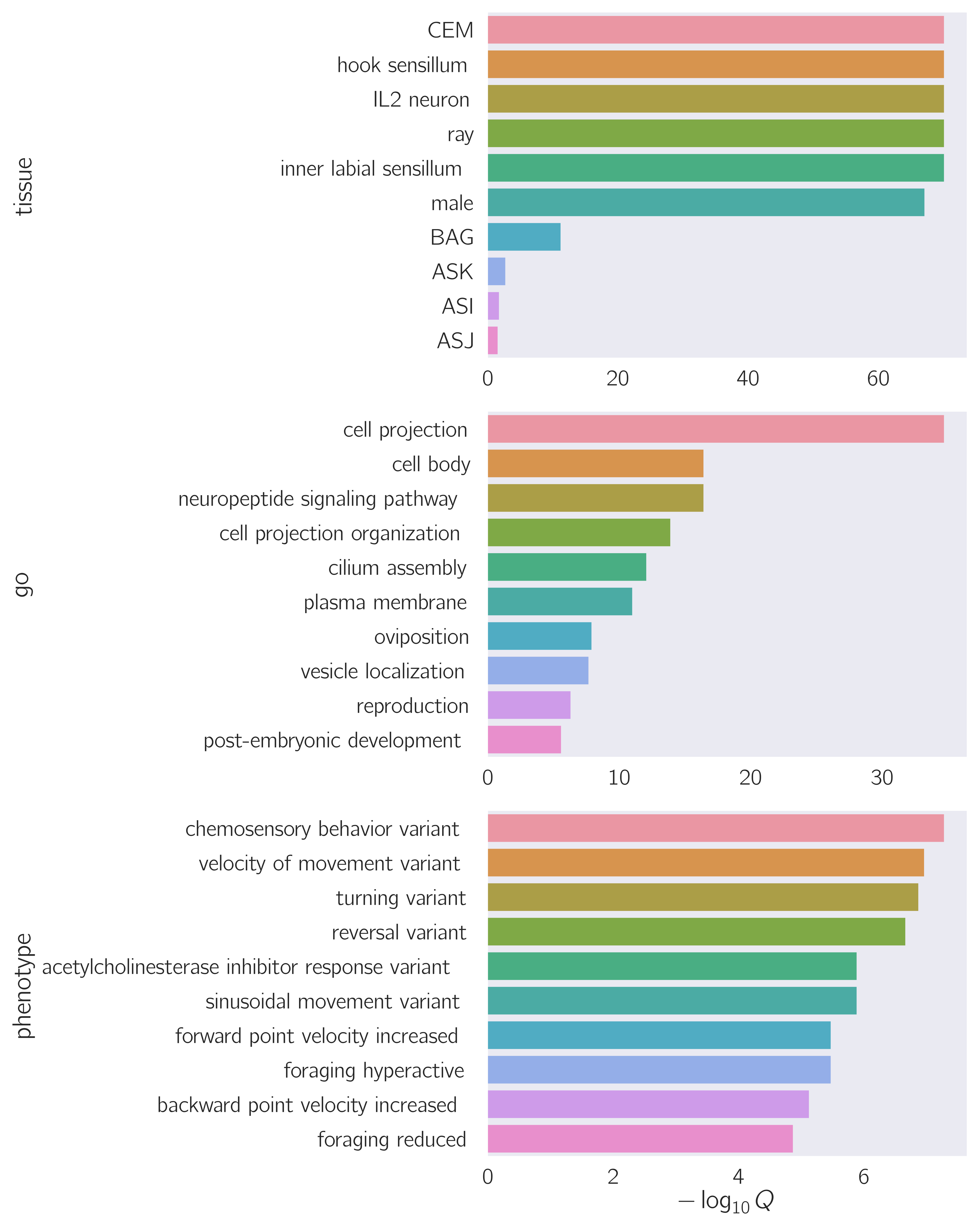Description
Genome-wide experiments routinely generate large amounts of data that can be hard to interpret biologically. A common approach to interpreting these results is to employ enrichment analyses of controlled languages, known as ontologies, that describe various biological parameters such as gene molecular or biological function. In C. elegans, three distinct ontologies, the Gene Ontology (GO), Anatomy Ontology (AO), and the Worm Phenotype Ontology (WPO) are used to annotate gene function, expression and phenotype, respectively (Ashburner et al. 2000; Lee and Sternberg, 2003; Schindelman et al. 2011).
Previously, we developed software to test datasets for enrichment of anatomical terms, called the Tissue Enrichment Analysis (TEA) tool (Angeles-Albores and Sternberg, 2016). Using the same hypergeometric statistical method, we extend enrichment testing to include WPO and GO, offering a unified approach to enrichment testing in C. elegans. The WormBase Enrichment Suite can be accessed via a user-friendly interface at http://www.wormbase.org/tools/enrichment/tea/tea.cgi.
To validate the tools, we analyzed a previously published extracellular vesicle (EV)-releasing neuron (EVN) signature gene set derived from dissociated ciliated EV neurons (Wang et al. 2015) using WormBase Enrichment Suite based on the WS262 WormBase release. TEA correctly identified the CEM, hook sensillum and IL2 neuron as enriched tissues. The top phenotype associated with the EVN signature was chemosensory behavior. Gene Ontology enrichment analysis showed that cell projection and cell body were the most enriched cellular components in this gene set, followed by the biological processes neuropeptide signaling pathway and vesicle localization further down. The tutorial script used to generate the figure above can be viewed at:
https://github.com/dangeles/TissueEnrichmentAnalysis/blob/master/tutorial/Tutorial.ipynb
The addition of Gene Enrichment Analysis (GEA) and Phenotype Enrichment Analysis (PEA) to WormBase marks an important step towards a unified set of analyses that can help researchers to understand genomic datasets. These enrichment analyses will allow the community to fully benefit from the data curation ongoing at WormBase.
Methods
Request a detailed protocolpip install tissue_enrichment_analysis
import tissue_enrichment_analysis as ea
The dictionaries can then be downloaded by typing:
ea.fetch_dictionary(dict)
References
Funding
This work was supported by the NIH grant U41 HG002223.
Reviewed By
Paola RoncagliaHistory
Received: February 7, 2018Accepted: February 28, 2018
Published: March 27, 2018
Copyright
© 2018 by the authors. This is an open-access article distributed under the terms of the Creative Commons Attribution 4.0 International (CC BY 4.0) License, which permits unrestricted use, distribution, and reproduction in any medium, provided the original author and source are credited.Citation
Angeles-Albores, D; Lee, RY; Chan, J; Sternberg, PW (2018). Two new functions in the WormBase Enrichment Suite. microPublication Biology. 10.17912/W25Q2N.Download: RIS BibTeX




